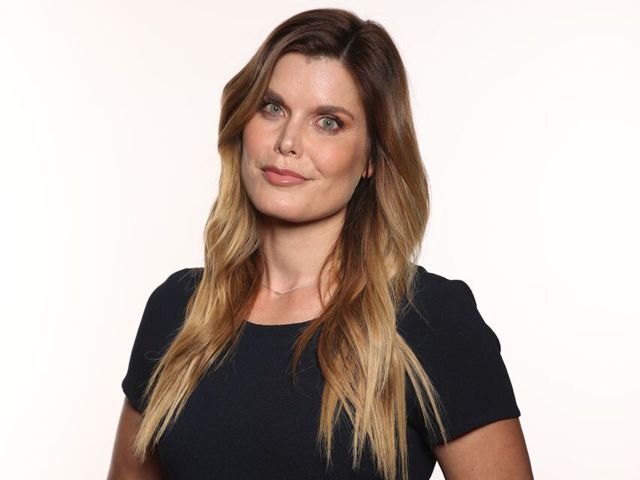Dr Katherine Armour Sun Protection Interview

Thinking About Your Sun Protection This Summer
Thinking about your SPF and knowing what product to put on your skin is crucial when you're living in the Australian summer, and most people are making simple mistakes.
Cetaphil Sun SPF 50+ Ultra Light Lotion
Cetaphil Sun SPF 50+ Ultra-Light Lotion has very high protection for oily skin body & face.
Cetaphil Sun SPF 50+ Ultra-light lotion, body and face is oil free and emulsifier free, formulated for very sensitive or oily skin.
Photostable UV filters offer highly effective UVA and UVB protection.
For extremely sun sensitive skin and very high UV protection.
The ultra-light oil free lotion spreads easily and leaves a pleasant, non-sticky feeling. The lotion is quickly absorbed resulting in a matt finish.
The ultra-light lotion nourishes the skin with vitamin E.
Interview with Dr Katherine Armour, Dermatologist
Question: How can we know what SPF product we need to use on our own skin?
Dr Katherine Armour: SPF stands for Sun protection Factor. An SPF of 50 means that it theoretically takes 50 times longer for sunburn to occur if you use a sunscreen appropriately, compared to wearing on sunscreen at all.
The Sun Protection Factor (SPF) relates to UVB protection only. In a testing situation, it is calculated by knowing how much UVB radiation is necessary to create redness (sunburn) on the skin. This is called the "erythemal radiation." When properly applied a product with an SPF of 15 would allow you to stay in the sun 15 times longer before burning, than if you wore no sunscreen. A SPF 15 sunscreen blocks 92.5% of erythemal radiation, a SPF 30 blocks 96.7%, and a SPF 50 sunscreen blocks 98% of erythemal radiation. You can therefore see that there is only a small increase in protection.
If you have very fair or sensitive skin, a history of skin cancer, or take photo-sensitising medications, you may need to choose a higher SPF.
If you have sensitive or oily skin it's recommended to use a sunscreen that is specifically formulated, hypoallergenic, dermatologically- tested, noncomedogenic and non-photosensitizing. Ingredients like Vitamin E also nourish delicate, sensitive skin.
It's important to remember even though sunscreens with a higher SPF do provide your skin with a greater level of protection, they still need to be reapplied to maintain the level of protection stated on the packaging. You still need to reapply as often as a sunscreen with a lower SPF rating.
Question: What are the simple sun protection mistakes Australians make in summer?
Dr Katherine Armour: Not applying enough (…or applying too late)
Not reapplying frequently enough
Skipping spots like the ears, lips or back of the neck
People think having darker skin makes them immune. While they do have less of a chance of burning, it does not protect them from UVA rays or the skin cancer and skin ageing they can cause.
Holding onto a sunscreen for too long. Check the expiration date!
Question: How much sunscreen, and how often, should the average Australian be applying?
Dr Katherine Armour: Most people would think that if they are applying sunscreen to their whole body it's doing the job – but what if the sunscreen isn't spreading evenly across and therefore not covering the whole body? In terms of measurements, you need to at least use 5ml (approx. one teaspoon) on each body part to ensure you are remaining protected from the sun. That equates to a total of 35ml (approx. seven teaspoons) for a full body application. To maintain your sun protection, sunscreen should be reapplied every 2 hours, and sooner if you've been swimming or sweating heavily.
 Question: After applying, how long should we wait until we go in the sun?
Question: After applying, how long should we wait until we go in the sun?
Dr Katherine Armour: Sunscreen needs time to do its job. If you only apply it once you arrive at the beach, your skin has already been exposed to harsh UV rays and damage has been done. To make sure sunscreen works its magic, apply it at home or at least 20 minutes before you head outdoors to give your skin the time to absorb the sunscreen, and for the product to disperse evenly.
Question: What active ingredients should you look for in sunscreen?
Dr Katherine Armour: There are two main components of sunscreen: UV absorbers and UV reflectors.
Chemical sunscreen filters work by absorbing ultraviolet A and/or B radiation to minimise its negative effects on the skin.
Chemical sunscreen filters include cinnamates (octocrylene, octyl methoxycinnamate, ethoxyethyl-p-methoxycinnamate), salicyclates (homosalate, octyl salicylate/octisalate, trolamine salicylate), avobenzone, ecamsule/Mexoryl SX, ensulizole, bemotrizinol, bisoctrizole.
Some consumers may choose to avoid oxybenzone and octinoxate as there is emerging evidence that the presence of these ingredients in the ocean may have adverse effects on the health of coral.
UV reflectors are made up of chemically inactive ingredients , like zinc oxide and titanium dioxide, that absorb and scatter UV radiation. These ingredients reflect visible light. Whilst it has always been thought that they reflect UV light, recent research suggests that they actually absorb UV light.
Question: Why do we need to wear sunscreen all year around?
Interview by Brooke Hunter
MORE



